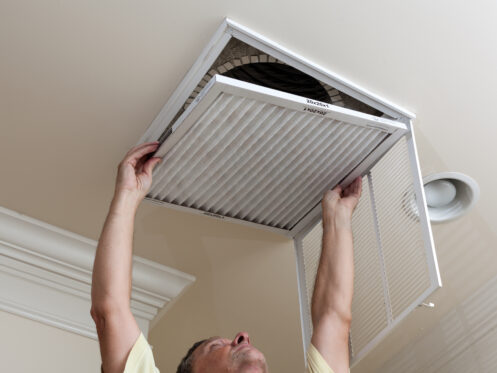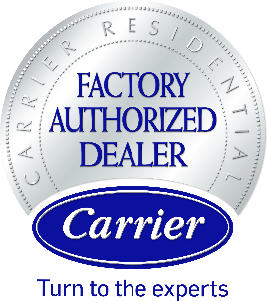The weather in Riverside, CA, can be beautiful. With plenty of sunshine and warm temperatures, this area is a dream to live in. However, outdoor pollution, wildfires, allergens, and inclement weather often make us head indoors for some time. While your home may seem like an ideal escape from outdoor air quality concerns, many people in this area have unhealthy indoor air as well. Luckily, there are improvements you can make to your HVAC system that will help you enhance the air you’re breathing inside your home. You can learn about them here.
What Affects My Indoor Air?
While there is a certain degree of air exchange that occurs between the outdoors and the inside of your Riverside home, indoor air can quickly become very stagnant and unhealthy. The air inside your home may currently be polluted with things like dust particles, pet dander, mold spores, and more. These particulates can irritate your nasal passages, make your eyes itchy, and cause a scratchy throat.
Volatile organic compounds (VOCs) are off-gassed from all sorts of things in your home. New building materials, chemical-based cleaning products, paint, candles, beauty products, and air fresheners are just some of them. When we breathe in VOCs, it can lead to allergy and asthma symptoms, as well as other systemic problems like hormone disruption and inflammation.
Ideally, we want to reduce the number of allergens, particulates, and VOCs that are circulating around in our indoor air. While there are improvements that you can make, such as switching to more natural options for cleaning your house, we can also invest in home air filtration to address any issues that are present. Choosing “green” building materials is another good option.
Different Types of Air Purification for the Home
The type of air purification device that you select for use in your home will depend on what your current indoor air quality looks like. A professional HVAC technician can perform an indoor air quality assessment to determine what your main culprits are. This includes checking for mold, moisture, and VOCs. Based on the collected data, a recommendation will be made for the type of filtration you may benefit from.
Whole-Home Air Purification
You’ve probably come across small, standalone air purifiers that can easily be plugged into the wall and moved from one room to another. You may already have a few of them in your home. While these units can be very effective for removing particulates from your indoor air, they only address a small amount of square footage at one time. A whole-house unit is a much better option for purifying the air that circulates throughout your entire home.
An HVAC technician can install an air purifier on your furnace. Any time your system switches on, the air that passes through it will be filtered. Depending on the type of unit that you select, you can often remove as much as 99.97% of the particulates that are polluting the air you’re breathing each day. Whole-home air purification units may also be equipped with different features that further improve your indoor air. Here are some that may interest you.
UV Light Filtration
A UV light installed on an air purification unit will expose air to UV-C light. This light will inactivate any pathogens or microorganisms that are present before the air circulates back through your ductwork and into your home. This UV-C light technology is completely silent and very effective at improving your indoor air quality. It can even help reduce the number of illnesses that you pass around your home during the cold and flu season. UV-C light filtration is also an effective method of reducing any odors that are in your home, resulting in fresher-smelling indoor air all year round.
Furnace Filters
All furnaces come equipped with a standard filtration system that requires a new filter once every 30 to 90 days. Filter types vary, and you can select a model based on the particles that you’re trying to remove from your indoor air. Furnace filters are rated using the MERV scale, which stands for minimum efficiency reporting values. The higher the rating of a filter, the more particulates it can trap. However, you don’t want to immediately reach for the highest-rated filter you can find. If your HVAC system can’t handle a very high-rated MERV filter, you could be creating strain on your equipment. A MERV of 8 to 13 is generally considered right for residential use.
HEPA Filters
High-efficiency particulate air (HEPA) filters are just one type that a filtration unit may use. HEPA filters can remove 99.97% of particulate matter from your air, including mold spores, dust, dander, pollen, and smoke. Typically made from a material such as fiberglass or polypropylene, HEPA filters are one of the best filtration options you can use. They aren’t commonly used in a traditional furnace, though. Because they can trap so many particulates in their tight-mesh design, they don’t allow proper airflow to pass through your furnace unless they’re used within a filtration unit. A HEPA filter on your furnace could lead to decreased air flow and more frequent repairs. It could also shorten the lifespan of your unit.
Activated Carbon Filtration
An excellent filter option that works in both your furnace and in whole-home purification units is an activated carbon filter. Activated carbon can absorb various odors and chemicals from the air that passes through it. If you live in a home that frequently deals with odors from pets, cooking, or smokers, an upgraded carbon filter is a wise investment for your health and the comfort of your household members. Activated carbon filters must be changed periodically to work efficiently. Generally, they last about as long as a standard furnace filter: 30 to 90 days, depending on the exact type.
Ozone Generation
Many air purification units are equipped with ozone generation. By energizing oxygen molecules that react when they encounter air pollutants, dust, particles, and other matter can be neutralized. Some people are sensitive to ozone generation, so this is a feature that you may want to discuss with an HVAC professional before you invest in it. Sometimes, health issues can be avoided by investing in a high-quality ozone generator that doesn’t produce substances like formaldehyde or ultrafine particles. Otherwise, this is an efficient and effective technique to improve indoor air quality if it is used along with a whole-home air purifier.
If you would like to learn more about the ways that you can improve the quality of your indoor air using various filtration techniques, reach out to the team at Sheldon's Heating, Air Conditioning & Plumbing. Our staff can perform an indoor air quality assessment as well as make recommendations for the air filtration methods you can invest in. In addition to air quality, we also focus on the installation, repair, and maintenance of all heating and cooling equipment.
Reach out to Sheldon's Heating, Air Conditioning & Plumbing today to schedule an appointment in the Riverside, CA area.




